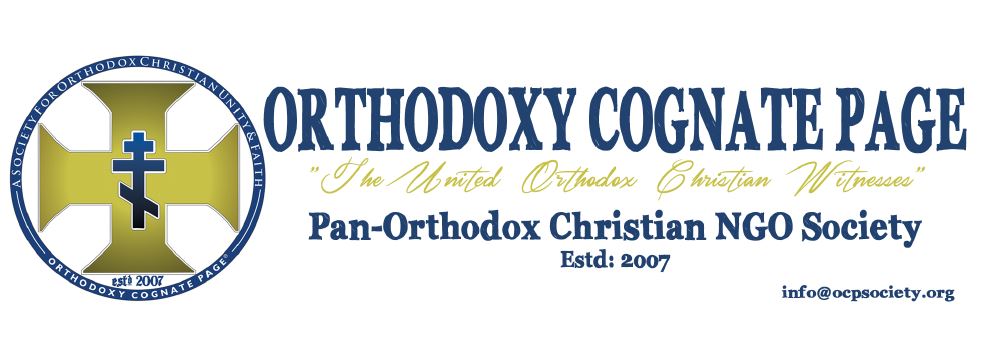Ecumenical Prayer in Jerusalem: “More United in Persecution”
.jpg)
Carlo Giorgi – February 2015
The Holy Land Christian Ecumenical Foundation (HCEF)
In the face of the advance of Islamic fundamentalism, persecution and suffering undergone today more than ever, the Christians of the Holy Land have to offer the world two signs: reciprocal love and prayer. This was the heart of the sermon pronounced on 28th January by the Custos of the Holy Land, Fr. Pierbattista Pizzaballa, on the occasion of the Solemn Prayer for Christian Unity celebrated in the Basilica of the Agony in Gethsemane. In the Holy Land the Week of Prayer for Christian Unity takes place later than in other countries, to respect the celebration of the Armenian Orthodox Christmas, which falls here on 19th January.
In the Basilica, packed mainly with local Christians, songs and prayers echoed in many different languages, including Ethiopian, Hebrew and Arabic. The religious leaders of the various Churches stood with the Custos around the stone of the agony, on the spot where Jesus prayed intensely before being betrayed. The Custos, in his sermon, commented a passage from the First Letter of St. John (1 John chapter 4, verses 7-16) and the story of the agony of Jesus in Gethsemane (Gospel according to Luke, chapter 22 verses 39-46). “The Word of God today summons us to two attitudes typical of Christian life,” Fr. Pizzaballa explained, “The first is that of reciprocal love. Christians have to make themselves recognized not for the power of their works or their institutions. It will not be our strategies that save us! Our love for one another must be the light that illuminates and which makes God’s love for man concretely present in our works. (…). The second attitude is prayer. It may seem strange today in the face of so much injustice and abuse, to limit ourselves to reacting with prayer. (…) Prayer is not the response against the evil of the world, which of course requires concrete action (…) but it allows us to understand the way in which to be inside this struggle against evil (…). To be real builders of peace, we need to continually learn how to be in life, in this struggle, loving man passionately, drawing our strength from prayer.”
Fr. Pizzaballa, meeting the journalists on the eve of the ecumenical prayer, summed up the ecumenical path in the Holy Land. “We have had a strong acceleration in our relations,” the Custos observed, “before it was rare for us to come together to pray together or sign common documents. In the past two years, however, there have been events which have changed our perception: feeling surrounded by the danger of fundamentalism has brought us much closer. We see that in our society the Caliphate has an incredible power of attraction. Our Christians, who live in the midst of the people, cannot come to terms with what they are hearing… In all this, though, we cannot resign ourselves to the prospect of a war of civilizations,” the Custos concluded. “In the sense that a war of civilizations can never be an acceptable prospect! The only perspective to aspire to is for everybody to live together according to clear and shared rules. The point of view of the faith also applies here: starting from there, I cannot believe being antagonistic to one billion and 700 million people just as I cannot believe that all those one billion and 700 million people are all against the Church!”
Bishop William Shomali, vicar of the Latin Patriarchate, meeting the journalists, also emphasized the concrete possibility of building relations of peace between the Churches. “Ecumenism is also humility,” Shomali explained. “In this sense Pope Francis, during his pilgrimage in the Holy Land taught all of us a great deal. There was a gesture of his, which perhaps only a few people saw, during the common celebration with the Ecumenical Patriarch of Constantinople, Bartholomew, at the Holy Sepulchre. Everything had been studied in detail, to ensure that the Catholic Pope and the Orthodox Patriarch were on the same level: The double reading of the Gospel, the double sermon and also entering the Basilica side by side. At a certain point though in the Basilica, the passageway becomes narrow and only one person can go through at a time. Who was to be given precedence between the two pastors? It could have led to a diplomatic case. The organizers decided not to decide, leaving Francis and Bartholomew to decide. When the decisive moment came, when Francis and Bartholomew arrived at the narrow place, Francis pushed Bartholomew ahead, obliging him to be first.” Another sign of peace is the presence, in the Latin Church of the Holy Land, of a small Hebrew-speaking community: “Five hundred people, Jews who have converted to Catholicism or immigrants. There are not very many of them but they are enthusiastic! Rome decided not to establish an autonomous diocese for these Hebrew-speaking Christians, entrusting them to the care of the ‘Arab’ patriarchate. In this way, we Christians of the Holy Land, of Arab culture and Hebrew language, live together in the Church, making peace between us. And it is a fine sign for everyone.”
